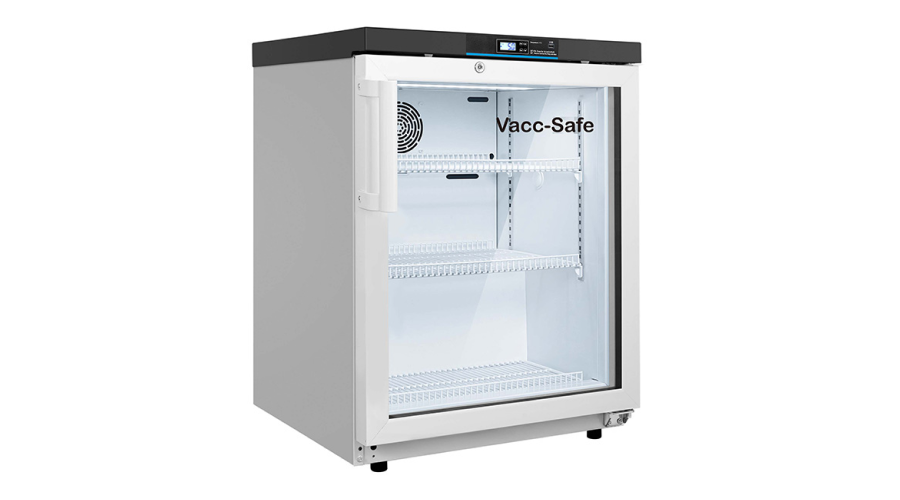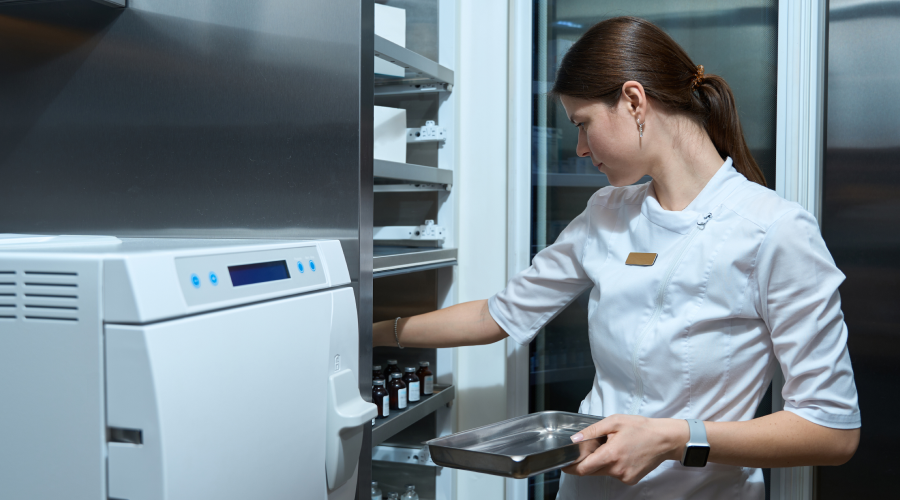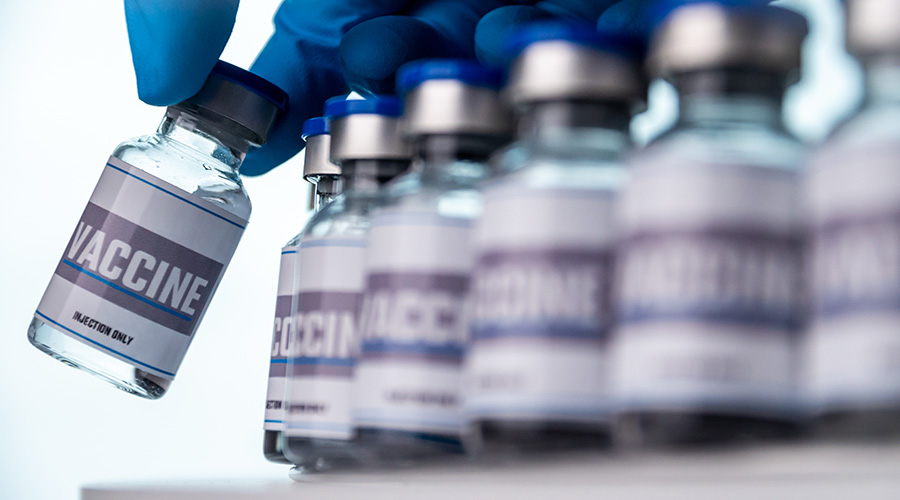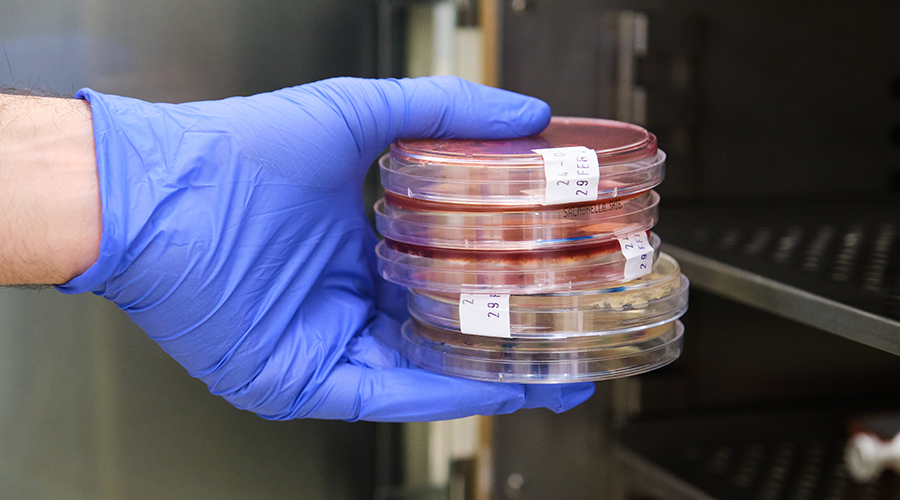Protect your temperature-sensitive products with a reliable cold chain, essential for safe storage and transport. It plays a critical role in several industries, including healthcare, food and beverage, and agriculture. By using purpose-built refrigerators, you ensure product quality is maintained and waste is reduced. Read our guide to understand the key elements of the cold chain and why it’s an important part of several industries. We will also introduce cold chain breaches and how you can feel best prepared to respond.
What is the Cold Chain?
The cold chain is a supply system designed to maintain specific temperature conditions. It encompasses the storage, transport, and handling of perishable products. The objective of a cold chain is to preserve the quality and efficacy of the stored products, which can include pharmaceuticals, vaccines, food and other temperature-sensitive goods. The cold chain begins once a temperature-sensitive product is manufactured or harvested, continues through transport and storage, and only ends once it reaches the end customer.
Refrigeration is at the core of the cold chain system, ensuring products are kept within specific temperature ranges, typically between 2°C and 8°C. This must be maintained through all stages of the chain, including manufacturing, transport, warehousing and delivery.
Everyone involved in the journey of a temperature-sensitive product is a part of the cold chain. This includes not only logistic providers and healthcare workers, but also manufacturers who create the product and farmers who handle it at the point of harvest. All of these parties play an important role in maintaining the integrity of the cold chain. Ensuring that all temperature-sensitive products are transported safely and delivered in optimal condition.
The Main Elements of the Cold Chain
The success of cold chain logistics depends upon three major components. These are: storage, transportation and monitoring. Each one is crucial for keeping products safe at the correct temperature through all stages of the supply chain.
Temperature-Controlled Storage
Temperature-controlled storage lies at the heart of the cold chain. This typically refers to when your products are held in cold storage or refrigerated warehouses. Because the cold chain begins when a product is manufactured or harvested, temperature-controlled storage is critical right from the start.
During storage, different equipment may be used to accommodate the different temperature requirements. For instance, in an immunisation clinic, medical refrigerators are commonly used to ensure pharmaceuticals remain safe at a strict temperature between 2°C and 8°C. An ultra-low temperature freezer may be used in a laboratory to keep biological samples frozen between -20°C to -40°C.
Refrigerated Transport
The second key element of the cold chain is refrigerated transport. Throughout this stage, temperature-sensitive materials will often require different equipment than during storage. This helps to ensure materials stay at the desired temperature while being offloaded onto trucks, ships or aeroplanes. During transport, the cold chain is maintained with a mix of portable cooler units and freezers, as well as specially-designed refrigerated trucks and vans.
Responsibility for compliance with cold chain protocols rests with several different parties during transport. For example, manufacturers are responsible for ensuring products are properly packaged and handed over at safe temperatures. Logistics and transport companies also have a duty to maintain accurate temperature monitoring and ensure all staff, such as drivers and handlers, are properly trained.
Monitoring
Monitoring must be done continuously through all stages of cold chain logistics. This is important because it enables immediate corrective action if any temperature deviations occur to ensure products remain safe. Using monitoring devices such as dataloggers, thermometers or IoT (Internet of Things) sensors, you can track temperature and humidity levels during both transport and storage. Each part of the cold chain is responsible for monitoring temperatures. For instance, when vaccines are in storage, a designated staff member must be responsible for accurate monitoring and management. However, all staff involved in handling vaccines are responsible for maintaining the cold chain.
The Purpose of the Cold Chain
The following are the key reasons for adhering to the cold chain:
Maintain quality
The cold chain is essential to maintaining the integrity of temperature-sensitive products. This is particularly important in a healthcare environment, where the efficacy of pharmaceuticals is maintained by storing them between 2°C and 8°C. Without the cold chain, these products can lose their efficacy when administered and may become unusable for patients.
Ensuring safety
Helps to ensure that all products remain safe. When food is left at room temperature, harmful bacteria can quickly build up, which increases the potential for foodborne illnesses and spoilage. In the medical field, the vaccines that keep us safe from serious diseases can be rendered unusable if the cold chain is not followed correctly by all team members. Adhering to the cold chain ensures all safety hazards are minimised.
Adhering to regulations
Many industries, such as food or healthcare, have strict regulations for the storage of temperature-sensitive products. Adherence to the cold chain means complying with these regulations and avoiding any potential fines or legal issues. For example, vaccines are managed by the National Vaccine Storage Regulations, which state that “Vaccines must be stored and transported within the recommended temperature range of +2°C to +8°C at all times.”
Reducing waste
Failure to comply with the cold chain can lead to significant waste. Particularly important to industries where products are expensive or in short supply. For instance, the cold chain is central to the transport of electronics. Given the high cost and value of this technology, maintaining the cold chain will be essential to minimising waste.
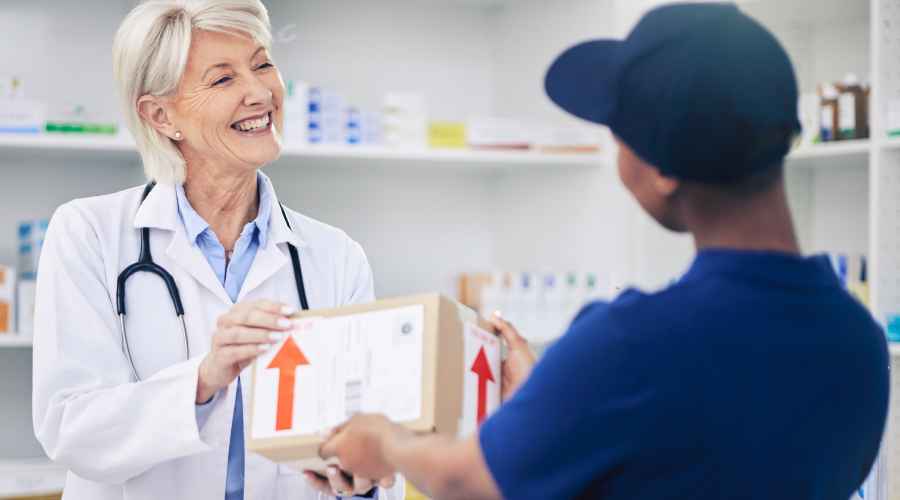
What Industries Use the Cold Chain
The Cold Chain is an important system for a variety of industries. From medicine and healthcare to food-related services, the following industries will use the cold chain:
Pharmaceutical and healthcare providers
Cold chain storage is central to keeping medical products as safe as possible. Vaccines, blood, insulin and other medicines all require precise temperature control to ensure their integrity is maintained. In healthcare centres, there are dozens of different devices used through the cold chain process. Medical refrigerators are a common device for hospitals and other healthcare centres, which are able to maintain a narrow temperature of between 2°C and 8°C. During transport between laboratories, clinics and hospitals, cold chain equipment such as portable refrigerators and coolers ensures their efficacy isn’t diminished.
Food and beverage
The food and beverage industry that fuels our everyday lives is heavily reliant on cold chain refrigeration. This guarantees their products remain fresh from the time they are produced until they are sold to consumers. This also helps prevent the buildup of harmful bacteria, and extends the shelf life of fruit, vegetables, dairy and meat. Although different products need different levels of cooling, freezers and refrigerators are both commonly used to maintain freshness.
Florticulture
Similar to food, once flowers are picked, they can wilt and quickly lose their freshness. For wholesalers and retailers, flower freshness is everything, which makes adhering to the cold chain a necessity. Once flowers are harvested, they are typically placed in hydro-cooling units before being transported in refrigerated trucks at a stable temperature. These steps help to prevent any unnecessary waste, ensuring flowers remain fresh for customers.
Chemical industry
Certain chemicals require strict temperature control to prevent any negative reactions. For example, highly flammable liquids such as ethanol must be refrigerated, as they can explode at high temperatures.
Cold storage facilities, temperature-controlled containers and trucks are all commonly used in the chemical industry to ensure safety.
Agriculture
Once farmers harvest fruit and vegetables, they instantly begin the ripening process. Therefore, cold chain logistics are an important part of the agricultural industry because they help to prevent bacteria from spreading and help to preserve their products. Because food poisoning is such a serious problem for both manufacturers and consumers, adhering to the cold chain ensures agricultural products are transported in the best condition. Warehouse refrigeration to portable coolers, and containers are all commonly used to slow the decay rate of produce.
Military
Blood banks are often needed quickly by military personnel when treating casualties in combat. However, if blood isn’t stored at the correct temperature, it can lead to potential contamination with decreased transfusion efficacy. This raises the stakes for cold chain management, with correct storage using portable vaccine refrigerators and coolers ensuring blood is ready for emergencies.
What is a Cold Chain Breach?
A cold chain breach occurs when your products are exposed to temperatures outside of their safety range. For example, vaccines must be stored at a precise temperature between +2°C and +8°C, during both transport and storage. Any deviations from this temperature, even if they are momentary, constitute a cold chain breach. A breach could be the result of a power outage, refrigeration and equipment failure, or human error when products are left at room temperature for too long. Breaches should be treated with the utmost importance, because by moving out of their safe temperature range, your products can become ineffective, or even unsuitable for human use.
When a cold breach occurs, it’s important to have clear protocols to save any affected products. For example, healthcare facilities storing vaccines are guided by the National Vaccine Storage Guidelines in how they respond. Based on these guidelines, you should abide by the following protocol during a breach:
- Immediately isolate the vaccines.
- Keep vaccines refrigerated between +2°C and +8°C, and label ‘Do not use’. Vaccines may need to be transferred to an alternative purpose-built vaccine refrigerator or cooler. If necessary, start conditioning ice packs/gel packs.
- Contact your state or territory health department as soon as possible (during business hours). The health department will require vaccine details, data logging, and twice-daily temperature readings to assess the breach.
- Do not discard any vaccine until advised to do so by your state or territory health department.
- Take steps to correct the problem and to prevent it from recurring.
- For privately purchased vaccines, contact the manufacturer for advice.
- For more information, please refer to the National Vaccine Storage Guidelines.
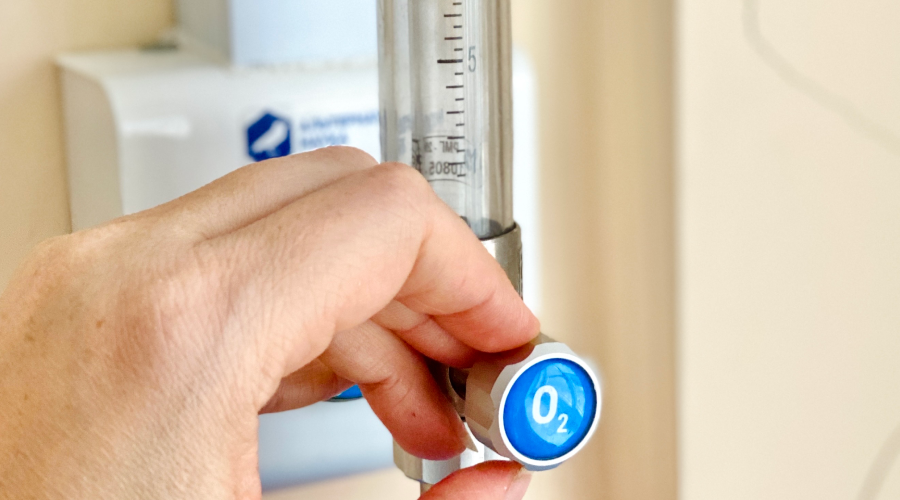
How To Monitor the Cold Chain
Monitoring is a critical step in cold chain logistics. Helps to ensure temperatures remain consistent and all breaches are properly dealt with:
1. Use Monitoring Devices
Cold chain monitoring relies on a network of temperature monitoring devices. These include data loggers, which are among the most widely used temperature sensors. They are specifically designed to record temperatures at consistent intervals during both storage and transportation, providing long-term data for analysis. Thermometers are another commonly used monitoring device. Equipped with sensor probes, they can directly monitor the conditions of your products and must be used continuously throughout both storage and transit. For example, food products in the cold chain may move from a shipping container to a refrigerated truck and then to a processing plant, all stages requiring consistent temperature monitoring. Other commonly used devices include wireless IoT monitoring systems, disposable cold chain monitors, and temperature chart recorders.
2. Follow Regulations
A key part of correctly monitoring the cold chain is adhering to regulations. This will govern how you approach monitoring the cold chain and the types of devices you are required to use. For example, vaccine practitioners must abide by the National Vaccine Storage Regulations. Under these regulations, you are required to have at a minimum a data logger and a minimum/maximum thermometer in place to continuously monitor refrigerator temperatures. If your facility was found to have failed these steps, it may face legal consequences from the Australian Health Practitioner Regulation Agency (AHPRA).
3. Incorporate Alarms and Alerts
Alarms are an indispensable part of cold chain monitoring, working in tandem with your devices. They can be paired directly with data loggers or thermometers and are capable of alerting staff to any potential cold chain breaches. Alarms are a critical component in ensuring successful cold chain management, particularly in healthcare centres with highly temperature-sensitive material, such as vaccines, insulin, specific antibiotics, or injections.
The cold chain is a specialised type of supply chain that ensures temperature-sensitive products are kept safe and secure. The process involves consistent refrigeration throughout both the storage and transport phases. This helps to minimise waste and ensures that our heat-sensitive products, such as food or pharmaceuticals, remain safe. If you’re looking to upgrade your medical refrigeration, then contact the expert team at Vacc-Safe for more information.
